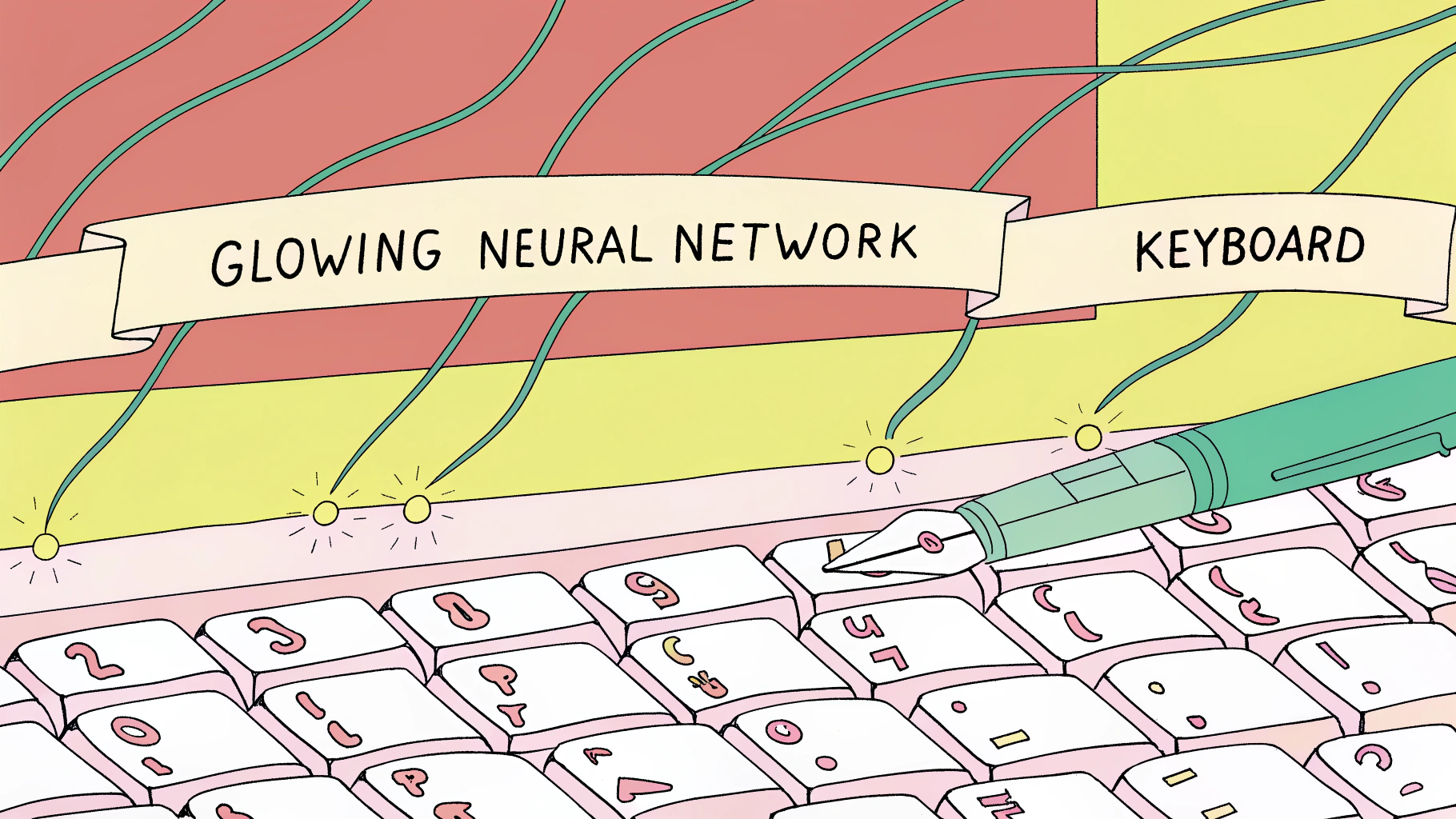How AI is Revolutionizing Blog Content Creation
Keeping up with a blog is tough. You need fresh ideas, consistent quality, and enough time to actually write. Most creators know the struggle: you sit down to draft a post, but the words just don't flow, or you get bogged down editing for hours. That's where AI content generator tools are starting to change the game for bloggers, marketers, and businesses.
So, what exactly is a blog writer AI? In simple terms, it's software that uses advanced natural language processing (NLP) to create human-like content. These tools analyze massive amounts of text, learn patterns, and then generate new blog posts, outlines, or even full articles based on your input. Some call them natural language generation engines, but most people just see them as smart assistants for writing.
The main draw? Time savings. According to several industry surveys, using AI for content creation can cut writing time by as much as 50% or more. That means you can publish more often, cover more topics, or just spend less time staring at a blank screen. And it's not just about speed. AI blog writers bring consistency to your posts, help with SEO optimization by suggesting keywords, and can even generate ideas when you're stuck.
- Save hours on drafting and editing with automated content creation
- Maintain a steady publishing schedule using blog automation tools
- Boost SEO with keyword suggestions and optimized structure
- Generate outlines, headlines, and even full posts in minutes
But let's be real: AI isn't perfect. Most tools still need a human touch. You'll probably find awkward phrasing, missing context, or facts that need double-checking. The best results come when you use AI as a starting point, then edit and refine the output yourself. It's a partnership, not a replacement.
Adoption of AI writing assistants is exploding. From solo bloggers to big media companies, more people are turning to blog automation tools to keep up with demand. Platforms like Jasper, Copy.ai, and Writesonic are everywhere. And for WordPress users, companies like Republish AI are building specialized tools to help manage and optimize content directly inside your site.
This guide breaks down how AI blog writers work, what they do well, and where they fall short. You'll see practical ways to use them, learn about the latest features, and get honest advice on how to blend AI with your own creativity. Whether you're looking to save time, improve your SEO, or just get unstuck, you'll find actionable tips here. And if you're a WordPress user, you'll get a peek at how Republish AI is making content optimization a whole lot easier—without the hype.
AI blog writers have changed how people approach content creation. Instead of staring at a blank page, you can now feed a few ideas into a tool and get a draft in minutes. But what’s actually happening behind the scenes? It’s not magic. These tools rely on natural language generation, a branch of artificial intelligence that’s trained to mimic how humans write. The best part: you don’t need a computer science degree to use them. Most AI writing assistants are built to be user-friendly, even if the tech under the hood is pretty advanced. If you're curious about how to leverage AI for SEO optimization, explore our resources on Advanced AI-Powered SEO Tactics for WordPress Blogs .

Content Generation Process
At the heart of every AI blog writer is a machine learning model trained on massive amounts of text. Think of it as a supercharged autocomplete, but way smarter. These models learn patterns, sentence structures, and even the subtle differences between a casual blog and a formal article. When you use an AI writing workflow, you’re guiding the tool through a series of steps that take you from a simple keyword to a polished draft. Here’s how that usually looks:
- Input your main keyword or topic. This tells the AI what you want to write about. For example, you might enter "blog writer AI" or "content optimization tools."
- Generate an outline. The AI suggests a structure for your post, breaking it into sections and subtopics. Some tools even let you tweak the outline before moving on.
- Create the first draft. Using natural language generation, the AI fills in each section with relevant content. It draws on its training data to write sentences that (usually) sound human.
- Edit and refine. You review the draft, make changes, and add your own insights. This step is crucial—AI can get you 80% of the way, but your voice and expertise make the content shine.
Some platforms automate the whole process with a single click, while others give you more control at each stage. Either way, the goal is to save time and reduce the mental load of starting from scratch.
Customization Options
Not every blog sounds the same, and AI writers know it. The best content optimization tools let you adjust the tone, style, and length of your posts. Want something friendly and conversational? Or maybe you need a more professional, authoritative vibe? Most AI writing assistants offer settings like:
- Conversational: Great for personal blogs or lifestyle content. The AI uses shorter sentences and a relaxed style.
- Professional: Ideal for B2B, finance, or technical topics. Expect more formal language and structured paragraphs.
- Persuasive: Useful for marketing or sales copy. The AI focuses on benefits, calls to action, and emotional triggers.
You can also set the length of your post, from quick tips to long-form guides. Some advanced tools even let you "train" the AI on your brand voice by feeding it examples of your previous content. That way, your posts stay consistent—even if you’re not the one writing every word.
SEO Optimization Features
If you’re blogging for traffic, SEO isn’t optional. AI blog writers have gotten pretty good at weaving in SEO best practices. Many tools now include built-in keyword research, competitor analysis, and suggestions for improving your content structure. For example, Republish AI’s Blog Editor is designed to help WordPress users optimize their posts for search engines. It can suggest where to place keywords, how to structure headings, and even flag sections that might need more detail.
Some AI writing assistants go a step further by analyzing top-ranking articles for your target keyword. They’ll recommend related terms, ideal word counts, and even the types of questions your post should answer. This kind of content optimization isn’t just about stuffing in keywords—it’s about making sure your post actually helps readers and stands a chance in Google’s results.
WordPress Integration
For most bloggers, WordPress is home base. That’s why WordPress AI integration is such a big deal. Instead of copying and pasting drafts between platforms, you can generate, edit, and publish content all in one place. This seamless workflow saves time and cuts down on errors. Republish AI, for example, focuses on making this process as smooth as possible for WordPress users. You get to skip the tech headaches and focus on what matters—creating content that actually gets read.
Direct integration also means you can use AI-powered features like internal linking, image suggestions, and real-time SEO checks right inside your WordPress dashboard. It’s a huge step up from juggling multiple tools or dealing with clunky exports.
Type of AI Blog Writer | Content Generation Workflow | Customization Options | SEO Features | WordPress Integration |
|---|---|---|---|---|
One-Click Solutions | Fully automated; enter topic, get draft instantly | Basic (tone, length) | Keyword suggestions, basic structure | Sometimes (often requires manual copy-paste) |
Assisted Writing Tools | Step-by-step: outline, draft, edit, optimize | Advanced (tone, style, brand voice, length) | Competitor analysis, content optimization tools, detailed SEO guidance | Usually direct integration (e.g., Republish AI, Jasper) |
The bottom line? AI blog writers aren’t just about speed. The real value comes from how well they fit into your workflow, how much you can customize the output, and whether they help you actually rank in search. If you’re serious about blogging, it’s worth looking for tools that offer both powerful content generation and seamless WordPress AI integration.

5 Ways to Use AI Blog Writers Effectively in Your Content Strategy
Overcoming Writer's Block with AI-Generated Outlines
Staring at a blank page is brutal. Even seasoned writers hit a wall sometimes. That’s where a blog outline generator powered by AI can really save the day. These tools take your topic or keyword and spit out a structured outline in seconds. Suddenly, you’ve got a roadmap instead of a dead end. It’s not magic, but it sure feels like it when you’re stuck.
Here’s a prompt you can use with most AI writing assistants to kickstart your next post:
"Generate a detailed outline for a blog post about [your topic]. Include an introduction, 3-5 main sections, and a conclusion. Make sure each section has a clear focus and a few bullet points of what to cover."
You’ll probably want to tweak the outline, but it’s a solid way to get moving. Some content creation software even suggests catchy subheadings or angles you hadn’t considered. The real win? You’re not stuck anymore.
Scaling Content Production for Multiple Topics
If you’re managing a blog with lots of categories or you’re working for clients in different industries, scaling up is tough. AI blog writers make it possible to cover more ground without burning out. You feed in your topics, and the AI writing assistant helps generate drafts, outlines, or even full posts. It’s not about replacing your team. It’s about multiplying what you can do.
Certain content types work especially well with AI assistance. Here are a few that most tools handle with ease:
- How-to guides (step-by-step instructions are easy for AI to structure)
- Listicles (top 10s, best-ofs, roundups)
- Product comparisons (especially when you provide the key features)
- FAQ pages (AI can generate answers based on your input)
- Template-based posts (like checklists or resource lists)
Long-form content generators can help you tackle big topics, too. Just remember: the more specific your input, the better the output. And you’ll still need a human touch to make sure each post fits your brand and audience.
Optimizing Existing Content with AI Assistance
Old blog posts can drag down your site if they’re outdated or missing key SEO elements. AI writing assistants are surprisingly good at helping you refresh and optimize this content. You can feed an existing post into the tool, ask for suggestions, and get ideas for new keywords, updated facts, or better structure.
Some platforms, like Republish AI, are built specifically for this. They help WordPress users identify underperforming posts and suggest ways to improve them. It’s not just about adding keywords. AI can recommend new sections, rewrite awkward sentences, or even flag outdated info. That’s a big deal for anyone trying to keep a large blog fresh and competitive.
You still need to review the changes, of course. But using AI as a second set of eyes can save hours and help you spot opportunities you might’ve missed.
Creating Consistent Brand Voice Across Multiple Authors
If you’ve got a team of writers, keeping a consistent brand voice is tough. Everyone’s got their own style, and that’s not always a good thing for your brand. AI blog writers can help by learning from your existing content. Many content creation software tools let you upload sample posts or brand guidelines. The AI then mimics your preferred tone, vocabulary, and structure.
Here’s how the process usually works:
- Gather a set of your best-performing blog posts or web pages.
- Highlight key phrases, tone, and style elements that define your brand.
- Upload these samples or guidelines into your AI writing assistant (if the tool supports it).
- Use the AI to generate new content, then review for consistency.
- Share the AI-generated drafts with your team as templates or starting points.
It’s not perfect, but it’s a huge step up from everyone winging it. You’ll still want a human editor to make sure the voice feels authentic, but AI can handle a lot of the heavy lifting.
Generating First Drafts for Human Refinement
Here’s the truth: AI blog writers are best at getting you from zero to a solid first draft. They’re fast, they don’t get tired, and they don’t run out of ideas. But the real magic happens when a human steps in to refine, fact-check, and add personality. That’s how you get content that actually connects with readers.
If you want to make the most of AI-human collaboration, try this workflow:
- Start with a clear prompt or outline for the AI (the more detail, the better).
- Let the AI generate a first draft or section.
- Review the draft for accuracy, tone, and structure.
- Edit for clarity, add personal insights, and check facts.
- Optimize for SEO and add internal/external links.
- Run a final proofread before publishing.
This approach saves time but keeps quality high. You get the speed of automation with the nuance only a human can bring. And honestly, that’s what separates good blogs from the ones that just feel robotic.
Bottom line: AI blog writers are powerful tools, but they work best as part of a bigger content creation process. Use them to break through creative blocks, scale up production, keep your brand voice sharp, and handle the grunt work of first drafts. Just don’t expect them to replace your unique perspective or expertise any time soon.
Limitations and Best Practices: Getting the Most from AI Blog Writers
Common Limitations of AI-Generated Content
AI blog post generators have come a long way, but they're not magic. Even the best AI writing assistants can trip up in ways that real writers spot instantly. If you're using an AI content generator for your blog, it's smart to know where these tools typically fall short. Recognizing these limits is the first step to getting better results.
- Factual inaccuracies: AI sometimes invents details or gets facts wrong, especially on niche or recent topics.
- Repetitive phrasing: You'll often see the same sentence structures or phrases pop up throughout a draft.
- Lack of original insights: AI can't draw on personal experience or offer unique perspectives the way a human can.
- Generic content: Many outputs feel bland or surface-level, missing the depth that comes from real expertise.
- Awkward transitions: Shifts between sections can feel abrupt or robotic.
- Overuse of keywords: Some AI blog writers stuff in keywords for SEO-optimized blog writing, which can hurt readability.
- Missed context: AI may misunderstand the intent behind a prompt, leading to off-topic or irrelevant sections.
If you've ever run a content quality assessment on an AI draft, you know these issues aren't rare. They're the reason human oversight is absolutely essential for any serious content strategy.
Editing and Fact-Checking AI Outputs
No matter how advanced your AI blog writer is, you can't just hit "publish" and call it a day. Editing and fact-checking are where the real magic happens. Here's a systematic approach that works for most teams (and solo bloggers too):
- Read the draft start to finish without making changes. Get a feel for flow, tone, and any obvious gaps.
- Highlight or note any statements that seem questionable or too generic. These are your fact-checking targets.
- Verify all facts, statistics, and names using trusted sources. If you can't confirm something, cut it or rewrite.
- Edit for clarity and voice. Adjust awkward phrasing, break up long sentences, and make sure the tone matches your brand.
- Add original insights, examples, or anecdotes. This is where you inject real value that AI can't provide.
- Check for repetitive language or overused keywords. Swap in synonyms or restructure sentences for variety.
- Run a final content quality assessment using AI editing tools or a human editor. Look for anything that still feels "off."
Some folks use tools like Grammarly or Hemingway Editor for a quick polish, but nothing beats a careful human review. Fact-checking isn't optional if you want to build trust and authority.
Avoiding AI Detection Issues
AI content detection is a hot topic, especially for anyone serious about SEO-optimized blog writing. Search engines and some platforms are getting better at spotting AI-generated text. If your content feels too robotic, it could get flagged or just fail to connect with readers. So, how do you make AI content sound more human?
- Mix up your sentence lengths and structures. AI loves patterns, but real writers break them.
- Add personal anecdotes or opinions. Even a short story or a "here's what I noticed" can make a big difference.
- Include original research, stats, or quotes from real people. This is something AI can't fake.
- Edit out generic phrases and replace them with specific details or local references.
- Use humor or rhetorical questions where appropriate. It helps break the monotony.
- Have a human do a final read-through. If it sounds like a robot, it probably is.
Tools like Republish AI's Blog Editor are designed to help you create content that reads naturally and passes most AI detection tools. But even with the best software, your own voice and perspective are what set your blog apart.
Ethical Considerations for AI Content
There's a lot of debate about how transparent bloggers should be about using AI. Some readers don't care, but others want to know if a post was written by a person or a machine. Being upfront about your process builds trust—and that's something every brand needs.
- Disclose when content is AI-assisted, especially for informational or sensitive topics.
- Always attribute quotes, data, and research to their original sources.
- Avoid using AI to create misleading, plagiarized, or manipulative content.
- Regularly review your workflow to make sure you're not crossing ethical lines.
- Encourage feedback from your audience about your use of AI. It can spark valuable conversations.
Most readers appreciate honesty. If you're using an AI blog post generator, just say so. And if you're blending AI with your own expertise, that's worth highlighting. Responsible AI content creation isn't just about following rules—it's about respecting your audience.
Bottom line? AI editing tools and blog automation are powerful, but they're not a replacement for your judgment. The best results come from a mix of smart software, careful editing, and a commitment to quality. If you keep that balance, you'll get the most out of every AI draft—without losing what makes your content truly yours.
Conclusion: The Future of AI in Blog Content Creation
AI blog writers have changed the way we think about content creation. They save time, help with consistency, and make it easier to optimize for search engines. But if there's one thing that's clear, it's this: AI works best when paired with human creativity. The smartest content creators use AI writing prompts and blog automation tools to speed up their workflow, then add their own insights and expertise.
Throughout this guide, we've seen that AI copywriting software can generate outlines, draft posts, and even suggest SEO improvements. Still, the most effective results come from a human-AI collaboration. You get the efficiency of automation, but the final product needs your voice, your fact-checking, and your unique perspective. No AI can fully replace that.
Looking ahead, the future of AI in content creation seems pretty exciting. We're already seeing tools that offer more advanced customization, smarter topic suggestions, and tighter integration with platforms like WordPress.
But let's be real: AI still has its limits. Sometimes it gets facts wrong, sometimes the writing feels a bit generic, and sometimes it just misses the mark. That's why it's so important to have a clear editing process. Use AI to handle the heavy lifting, then step in to polish, personalize, and make sure everything's accurate.
- Start with specific use cases where AI excels, like generating first drafts or brainstorming topics.
- Develop a reliable editing and fact-checking process for every AI-generated post.
- Focus on adding your own insights, stories, and expertise to make content stand out.
- Experiment with different AI writing tools to find the best fit for your workflow.
- Stay updated on new features and trends in AI blog writing—things change fast.
Emerging trends are worth watching. We're seeing more tools that let you fine-tune tone and style, better detection of factual errors, and even AI that learns from your previous posts. Integration with content management systems is getting smoother, too. The line between "AI-generated" and "human-edited" content is starting to blur, but the need for real human oversight isn't going anywhere.
If you're just starting out, don't expect AI to do everything for you. Use it as a partner, not a replacement. The best results come from combining the speed and structure of AI with your own creativity and judgment. That's how you get content that actually connects with readers.
Curious about how to get even more from your AI-powered workflow? Check out the AI WordPress SEO resources on the Republish AI blog. You'll find practical tips, workflow ideas, and the latest on optimizing your content for search engines.



